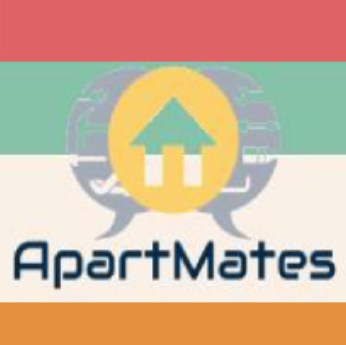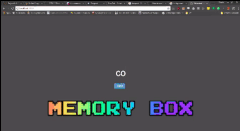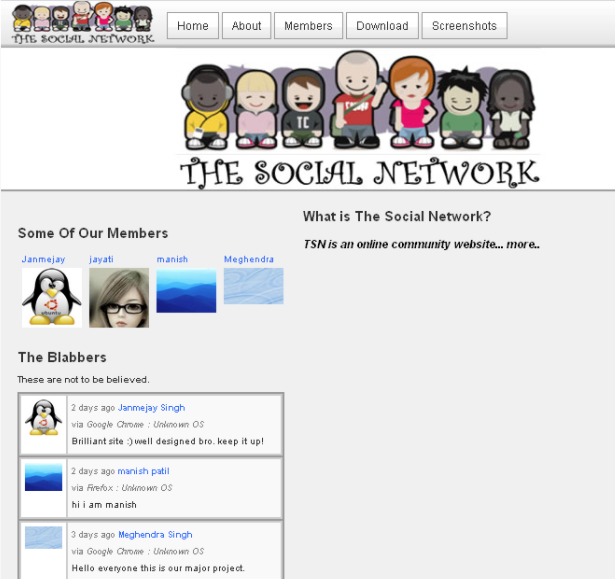Forest Detector
 The objective here was to classify regions of forest within a geographic area using deep convolutional neural networks (CNNs). The project involved development of software infrastructure to train different CNN architectures on a dataset of "forest" and "non-forest" images. The trained networks were then used to automatically annotate forest and non-forest regions in a large aerial image of Floyd County, VA. Technologies used: Python, Pandas, Flask, TensorFlow, Keras. More details available in this paper. Source code for this project is available here.
The objective here was to classify regions of forest within a geographic area using deep convolutional neural networks (CNNs). The project involved development of software infrastructure to train different CNN architectures on a dataset of "forest" and "non-forest" images. The trained networks were then used to automatically annotate forest and non-forest regions in a large aerial image of Floyd County, VA. Technologies used: Python, Pandas, Flask, TensorFlow, Keras. More details available in this paper. Source code for this project is available here.
ApartMates
 ApartMates is a web service that enables delegation and sharing of responsibilities and expenses among roommates in shared apartments. Users can create tasks with deadlines and priorities, shared amongst all roommates, and earn reputation points for finishing tasks on time. The system automatically generates grocery lists and grocery prices using the Walmart Open API. It also provides a RESTful interface to access user reputation points. Technologies used: JavaEE, PrimeFaces, JPA, MySQL, JAX-RS. More details available in the report. Source code for this project is available here.
ApartMates is a web service that enables delegation and sharing of responsibilities and expenses among roommates in shared apartments. Users can create tasks with deadlines and priorities, shared amongst all roommates, and earn reputation points for finishing tasks on time. The system automatically generates grocery lists and grocery prices using the Walmart Open API. It also provides a RESTful interface to access user reputation points. Technologies used: JavaEE, PrimeFaces, JPA, MySQL, JAX-RS. More details available in the report. Source code for this project is available here.
Beat-Click
 This is a system consisting of Android wearable and smartphone applications which captures images using the smartphone camera when the heart rate (HR) of the user changes. The key idea is certain HR patterns are associated with a change in a person's disposition, and thus can be used as signals to capture important events a person experiences, while doing an activity (e.g., hiking) using photographs. The captured photographs along with associated HR values and timestamps can be analyzed post-hoc to discover, visualize and document changes in user's mood through a hike and the important events associated with these changes. Such information can be used to automatically capture and filter important memories for the user, without disrupting their hiking experience. Technologies used: Java, Python, Android SDK, Wear SDK, Plotly. Details about the system and the broader project are available in this paper. Source code is available here.
This is a system consisting of Android wearable and smartphone applications which captures images using the smartphone camera when the heart rate (HR) of the user changes. The key idea is certain HR patterns are associated with a change in a person's disposition, and thus can be used as signals to capture important events a person experiences, while doing an activity (e.g., hiking) using photographs. The captured photographs along with associated HR values and timestamps can be analyzed post-hoc to discover, visualize and document changes in user's mood through a hike and the important events associated with these changes. Such information can be used to automatically capture and filter important memories for the user, without disrupting their hiking experience. Technologies used: Java, Python, Android SDK, Wear SDK, Plotly. Details about the system and the broader project are available in this paper. Source code is available here.
Memory Box
 The objective here was to build a system that can find instances (frames) within videos in a large video library that match a natural language user query. The system builds on the Automated Image Captioning Using Deep Learning approach by Andrej Karpathy, Fei-Fei Li and extends it to videos. In essence, the system pre-processes all the videos in the library, by sampling frames (i.e. images) from each video, every few seconds and generates natural language captions for each frame using a Convolutional neural network and a Long short-term memory network. These captions are then indexed as documents along with the corresponding video url and timestamp. When a users submits a search query, this index is used to retrieve the caption that best matches the search terms, along with the video and the precise timestamp, within the video associated with the caption. This project was built during the Build to Learn hackathon at Virginia Tech. Technologies used: Python, Flask, PyTorch, Lucene, CNN, LSTM, Bootstrap. Video demo and more details are available on Devpost. The source code can be found here.
The objective here was to build a system that can find instances (frames) within videos in a large video library that match a natural language user query. The system builds on the Automated Image Captioning Using Deep Learning approach by Andrej Karpathy, Fei-Fei Li and extends it to videos. In essence, the system pre-processes all the videos in the library, by sampling frames (i.e. images) from each video, every few seconds and generates natural language captions for each frame using a Convolutional neural network and a Long short-term memory network. These captions are then indexed as documents along with the corresponding video url and timestamp. When a users submits a search query, this index is used to retrieve the caption that best matches the search terms, along with the video and the precise timestamp, within the video associated with the caption. This project was built during the Build to Learn hackathon at Virginia Tech. Technologies used: Python, Flask, PyTorch, Lucene, CNN, LSTM, Bootstrap. Video demo and more details are available on Devpost. The source code can be found here.
The Social Network
 This is one of my undergraduate projects, a social networking web service. The system application is capable of securely loging users in and out. Users can create public profiles, upload profile picture and chat with other users. It also has the “remember me” feature which allows users to access their profiles without logging in. Technologies used: PHP, MySQL, HTML, CSS, JavaScript, Apache, Google Maps API. More details available in this report. Source code for this project is available here.
This is one of my undergraduate projects, a social networking web service. The system application is capable of securely loging users in and out. Users can create public profiles, upload profile picture and chat with other users. It also has the “remember me” feature which allows users to access their profiles without logging in. Technologies used: PHP, MySQL, HTML, CSS, JavaScript, Apache, Google Maps API. More details available in this report. Source code for this project is available here.
A* Maze Solver
 This is a NetLogo toy simulation which simulates the A* path finding algorithm. Users can draw obstacles or completes mazes and the agent (turtle) will find the shortest possible path (if one exists) to a destination point (patch). The path finding is visualized in the model, so users can observe, understand and learn how the algorithm works. More details, including how to use the model are available on the official NetLogo user community page.
This is a NetLogo toy simulation which simulates the A* path finding algorithm. Users can draw obstacles or completes mazes and the agent (turtle) will find the shortest possible path (if one exists) to a destination point (patch). The path finding is visualized in the model, so users can observe, understand and learn how the algorithm works. More details, including how to use the model are available on the official NetLogo user community page.

 The objective here was to classify regions of forest within a geographic area using deep convolutional neural networks (CNNs). The project involved development of software infrastructure to train different CNN architectures on a dataset of "forest" and "non-forest" images. The trained networks were then used to automatically annotate forest and non-forest regions in a large aerial image of Floyd County, VA. Technologies used: Python, Pandas, Flask, TensorFlow, Keras. More details available in this
The objective here was to classify regions of forest within a geographic area using deep convolutional neural networks (CNNs). The project involved development of software infrastructure to train different CNN architectures on a dataset of "forest" and "non-forest" images. The trained networks were then used to automatically annotate forest and non-forest regions in a large aerial image of Floyd County, VA. Technologies used: Python, Pandas, Flask, TensorFlow, Keras. More details available in this  ApartMates is a web service that enables delegation and sharing of responsibilities and expenses among roommates in shared apartments. Users can create tasks with deadlines and priorities, shared amongst all roommates, and earn reputation points for finishing tasks on time. The system automatically generates grocery lists and grocery prices using the Walmart Open API. It also provides a RESTful interface to access user reputation points. Technologies used: JavaEE, PrimeFaces, JPA, MySQL, JAX-RS. More details available in the
ApartMates is a web service that enables delegation and sharing of responsibilities and expenses among roommates in shared apartments. Users can create tasks with deadlines and priorities, shared amongst all roommates, and earn reputation points for finishing tasks on time. The system automatically generates grocery lists and grocery prices using the Walmart Open API. It also provides a RESTful interface to access user reputation points. Technologies used: JavaEE, PrimeFaces, JPA, MySQL, JAX-RS. More details available in the  This is a system consisting of Android wearable and smartphone applications which captures images using the smartphone camera when the heart rate (HR) of the user changes. The key idea is certain HR patterns are associated with a change in a person's disposition, and thus can be used as signals to capture important events a person experiences, while doing an activity (e.g., hiking) using photographs. The captured photographs along with associated HR values and timestamps can be analyzed post-hoc to discover, visualize and document changes in user's mood through a hike and the important events associated with these changes. Such information can be used to automatically capture and filter important memories for the user, without disrupting their hiking experience. Technologies used: Java, Python, Android SDK, Wear SDK, Plotly. Details about the system and the broader project are available in this
This is a system consisting of Android wearable and smartphone applications which captures images using the smartphone camera when the heart rate (HR) of the user changes. The key idea is certain HR patterns are associated with a change in a person's disposition, and thus can be used as signals to capture important events a person experiences, while doing an activity (e.g., hiking) using photographs. The captured photographs along with associated HR values and timestamps can be analyzed post-hoc to discover, visualize and document changes in user's mood through a hike and the important events associated with these changes. Such information can be used to automatically capture and filter important memories for the user, without disrupting their hiking experience. Technologies used: Java, Python, Android SDK, Wear SDK, Plotly. Details about the system and the broader project are available in this  The objective here was to build a system that can find instances (frames) within videos in a large video library that match a natural language user query. The system builds on the
The objective here was to build a system that can find instances (frames) within videos in a large video library that match a natural language user query. The system builds on the  This is one of my undergraduate projects, a social networking web service. The system application is capable of securely loging users in and out. Users can create public profiles, upload profile picture and chat with other users. It also has the “remember me” feature which allows users to access their profiles without logging in. Technologies used: PHP, MySQL, HTML, CSS, JavaScript, Apache, Google Maps API. More details available in this
This is one of my undergraduate projects, a social networking web service. The system application is capable of securely loging users in and out. Users can create public profiles, upload profile picture and chat with other users. It also has the “remember me” feature which allows users to access their profiles without logging in. Technologies used: PHP, MySQL, HTML, CSS, JavaScript, Apache, Google Maps API. More details available in this  This is a
This is a